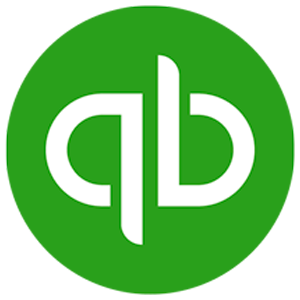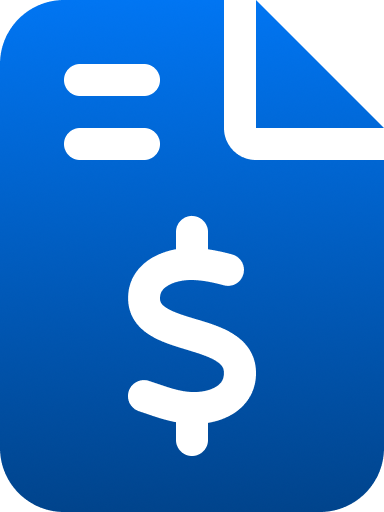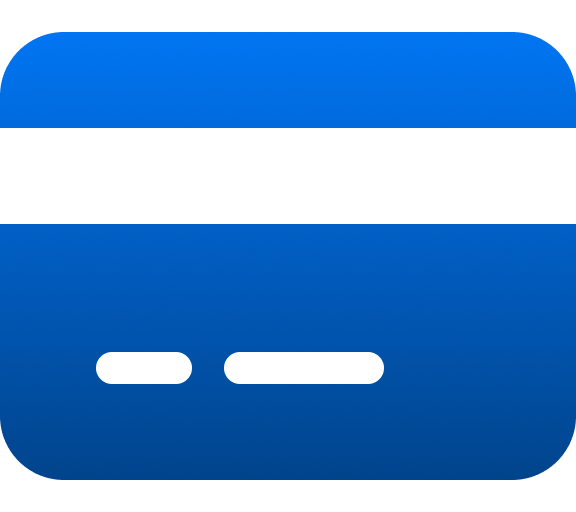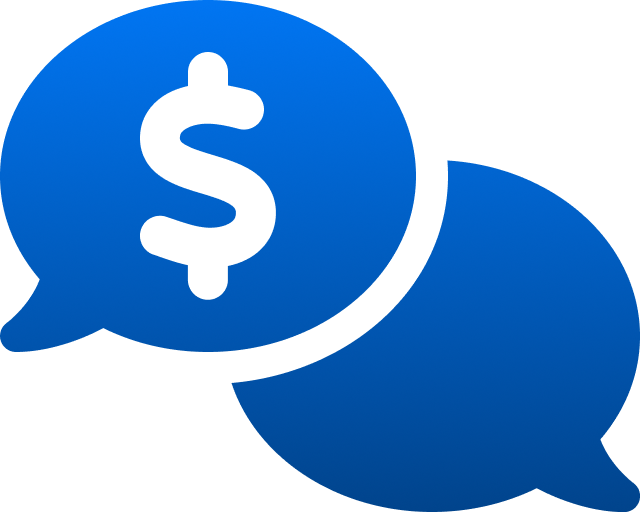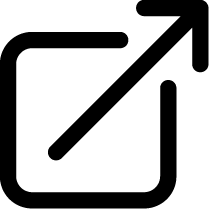Pre-authorized debit (PAD) offers businesses a secure, efficient way to collect payments, especially for service-based companies with ongoing customer relationships and recurring billing. For these businesses, the benefits of PAD are clear: predictable cash flow, reduced admin time, and fewer missed payments.
But for customers? The benefits of PAD aren’t always obvious. Many are hesitant to switch from familiar methods like e-transfers, credit cards, or cheques. They may have concerns about trust, control, or just don’t understand how PAD works, or why it’s better for them.
This guide is designed to help you bridge that gap. It’s for businesses that want to collect customer payments using pre-authorized debit (PAD) as their main payment method.
Whether you’re already using PAD, introducing it as a new option, or phasing out other payment options, this resource will help you explain the value of PAD in a way your customers will understand and appreciate.
Need help getting started with PADs? How to accept pre-authorized debits: a beginner’s guide
This resource will help you to talk to your customers about:
And provide you with:
Businesses that also plan to offer other payment methods, such as credit cards or e-transfers, should consider the following:
- Fees – cost comparisons for the different payment methods, including per-transaction fees, setup, and support.
- Customer convenience – payments may not be automatic or require a manual payment by customers to avoid interest fees if not paid off.
- Cash flow – payments initiated by customers may require reminders and follow-up. Credit cards expire, get lost, or are replaced, which may disrupt scheduled payments and require updates.
- Security – maintaining PCI-DSS standards for the storage and safekeeping of credit card data.
- Bookkeeping – managing payments from multiple payment methods may add to bookkeeping requirements or make bookkeeping more complex.
Explaining PAD to your customers
What is pre-authorized debit (PAD)?
A great way to explain pre-authorized debits to your customers is to ask if they are already using them. Chances are, they already have recurring bills being paid this way. Utility bills, insurance premiums, vehicle loans, and mortgage payments paid directly from their bank account are all common examples of pre-authorized debit payments.
Sample answer:
“Instead of remembering to send a payment each month, you provide us authorization to withdraw the amount directly from your bank account on the due date. It works just like a subscription—once set up, your payments happen automatically without any extra effort.”
Why are you using PAD to collect payments?
Customers want to understand why you are moving to PAD payments. It’s important to clearly articulate why this helps your business as well as how it benefits them.
Sample answer:
We use pre-authorized debit because it’s simple, secure, and reliable—for both you and us.
PADs reduce our time spent on chasing payments, cut down on our administrative work, and make our cash flow more predictable. That means we can focus more of our time and energy on serving you.
PADs offer convenience and peace of mind for our customers. Payments happen automatically, so you don’t have to remember due dates or worry about missing a payment. It’s one less thing on your to-do list. PADs also come straight from your bank account, with no interest charges or card fees.
Note: Offering flexible payment options can be beneficial to your business. Offering different payment frequencies (e.g. once or twice a month) based on your customers’ preferences shows you are flexible and want to cater to their situation. Not only will this make pre-authorized debit an attractive option for your customers, but it also might be a competitive advantage for your business.
Overcoming objections
Can I use a credit card to pay?
Sample answer:
We currently only accept pre-authorized debit (PAD) as our payment method. We’ve chosen PAD because it’s a reliable and cost-effective option for both our business and our customers.
Unlike credit cards, PAD payments come directly from your bank account, so there are no interest charges or processing fees on your end. Once it’s set up, everything runs automatically, so you don’t have to remember due dates or worry about card expirations, replacements, or declines.
This also helps us keep our costs down and avoid chasing missed payments, which means we can keep our pricing fair and focus on providing great service.
Can I use a cheque to pay?
Sample answer:
We currently use pre-authorized debit (PAD) as our only payment method. We’ve found that PAD is more efficient and reliable for both our business and our customers.
With PAD, your payments are automatic and always on time, so there’s no need to remember to write and mail a cheque each month. It also eliminates delays, lost mail, or processing errors that can happen with cheques. For you, it’s one less task to manage—and for us, it helps reduce paperwork and keeps things running smoothly.
Frequently Asked Questions
What information do I need to provide to get PAD set up?
A PAD authorization (or PAD agreement) is the required agreement between a payee and the payor. A completed PAD authorization outlines the details of the payment, contains the payor’s banking information, and exists as the contract for the debiting. PAD authorizations can be collected in a way that works best for your business. This could be through a physical paper form, an online form, or even verbally over the phone (as long as proper records are kept). There’s flexibility in how you collect authorization, as long as it includes the key details and follows the rules set out by Payments Canada. Learn more about the specific details that are required on all PAD authorizations.
The method you choose should match your workflow, how you normally communicate with customers (do you see them regularly or rarely), and what makes the process easiest to manage on your end. Whether you prefer a digital system or a more personal touch, you can pick the approach that keeps things simple and secure for both you and your customers.
Rotessa offers online tools to obtain authorization from your customers. They make it wasy to request and receive the permission needed.
Sample answer:
You will need to complete an authorization that includes:
- Your name and address (as it appears on your bank account)
- Your contact information
- A void cheque or:
- Your bank branch transit number
- Your bank account number
- Your bank’s institution number
You can easily find the banking details needed for PAD set up on the bottom of a cheque (even a void one), or in your online or mobile banking app—usually under account details or direct deposit information. Look for your account number, branch (transit) number, and institution number.
How will I know the payment amount?
If the payment amount is static
Sample answer:
You’ll always know in advance what you’re being charged. The amount is laid out clearly in the agreement we set up together. If it ever changes, I’ll let you know, so there are no surprises.
If the amount is variable and an invoice is issued
Sample answer:
The payment amount will be reflected on our regular invoice, which we provide in advance. This way, there are no surprises.
Will I get a reminder?
If you issue invoices
Sample answer:
Your regular invoice will serve as a reminder. The payment amount and payment date (the specific date the funds will be removed from your account) are included.
If you provide reminders
Sample answer:
You will receive a reminder (include type such as email) of your upcoming payment. This way you have time to ensure the required funds are in your account.
If you don’t provide reminders
Sample answer:
I don’t send out reminders before each payment, but the good news is your payment will always come out on the same day every month—[for example, the 1st or the 15th]. That consistency makes it easy to remember and plan for. If the payment date ever needs to change, I’ll let you know in advance.
With Rotessa, you can send email notifications to remind your customers of their upcoming payments. When enabled in your account settings, a reminder email will automatically be sent to your customers three days before their payment date. This will help them remember to have funds available in their account. It also helps avoid NSF (non-sufficient funds) charges, reducing administrative work for you.
Is my bank information secure?
Sample answer:
Yes—your information is safe. PAD payments are secure and protected. Your banking details are stored securely and only used for the payments you’ve authorized. PADs are regulated by Payments Canada, so there are clear rules in place to keep your information protected.
Will I get a receipt?
Sample answer:
Once the payment is processed, you’ll see it on your bank statement as proof of transaction. If you ever need a copy of a payment for your records, just ask.
With Rotessa, you can provide email receipts for your customers’ payments. When enabled in your account settings, a payment receipt will automatically be emailed to your customers on the same day as your settlement. Receipts are a great way to provide your customers with payment confirmation and a transaction record. Payment receipts are only sent out to customers with approved transactions.
What happens if there isn’t enough money in my account?
If a payment is returned as declined, your business may incur additional charges from your bank and/or payment provider. Decline fees, such as non-sufficient funds (NSF), vary. Some businesses are willing to absorb these costs, while others choose to pass them along to their customers.
It’s important to be upfront with your customers about your policy regarding payment declines. Ideally, this is done at the same time as authorization is collected from your customers. Should a payment get declined, it should be stated if additional fees will be incurred, the amount, and how they will be collected. It should also inform them when and how their original payment will now be collected.
Sample answer:
If there’s not enough in your account when the payment is due, your bank may decline the payment and charge an NSF (non-sufficient funds) fee. If that happens, just reach out and we’ll sort out a new payment date. I understand that things come up, and I’m happy to work with you.
My payment didn’t go through. Now what?
When a payment has been declined (due to NSF).
Sample message:
I wanted to let you know that your recent pre-authorized debit (PAD) payment was declined due to insufficient funds. As a result, an NSF (non-sufficient funds) fee of $XX will be added to your account.
To get things back on track, please let me know a good date to reschedule the missed payment. We’re happy to work with you to find a time that works best.
Quick reference guide: how to talk to customers about switching to PAD payments
1. Communicate early and clearly
- Announce the switch via email, invoices, your website, and in-person conversations.
- Let customers know when the change is happening and what to expect.
- Keep the tone helpful, clear, and focused on benefits.
2. Explain what PAD is
- PAD = Pre-authorized debit. It’s an automatic withdrawal from a customer’s bank account.
- It works like a subscription or bill payment (e.g., mortgage, utility, or insurance).
- Customers only set it up once—payments are automatic from then on.
3. Share why your business is using PAD
- Saves admin time and reduces late/missed payments.
- Improves cash flow predictability.
- Reduces costs (no card processing fees, less chasing).
- Let’s you focus more on customer service.
- Offers convenience and peace of mind for customers—no manual payments or reminders needed.
4. How to talk about PAD benefits to customers
- Automatic: No need to remember due dates.
- Secure: Bank-level encryption and PAD regulations via Payments Canada.
- No fees: Unlike credit cards, there are no interest charges or processing fees.
- Consistent: Always withdrawn on the same day—easy to budget for.
5. Handling objections: credit cards and cheques
“Can I use a credit card instead?”
- We only accept PAD to keep things simple and cost-effective.
- Credit cards can expire, be lost, or charge interest. PAD avoids all that.
“Can I pay by cheque?”
- Cheques can get lost or delayed—PAD ensures automatic, on-time payments.
- It also reduces paperwork for both of us and avoids potential errors.
6. Setting up PAD: what customers need to know
Requirements to sign up.
- Name, contact info, bank account number, branch (transit) number, and institution number.
- Info can be found at the bottom of a cheque or in mobile banking apps.
How do I authorize PAD?
- PAD authorizations can be collected via:
- Paper forms
- Online forms
- Phone (with proper documentation)
- Choose the method that fits how you work with your customers.
7. Answering customer questions
Will I receive a receipt?
- Every payment will show on your bank statement. Ask if you need a copy.
Will I get a reminder?
- If you send invoices or reminders: “Your invoice includes your payment amount and date.”
- If not: “Payments always come out on the same day—easy to remember!”
Is my bank information safe?
- Yes—your data is securely stored and only used for authorized payments.
What if I don’t have enough money in my account?
- The payment will be declined and may result in an NSF fee.
- We’ll contact you to reschedule the payment—just let us know a good date.
8. Tools to make it easy
- Offer a simple step-by-step sign-up process.
- Use online tools like Rotessa to:
- Collect authorization securely
- Send automated payment reminders
- Issue receipts to customers
Letter templates
Letter/email template for informing your customers about using PAD to collect payments
We’re reaching out to let you know that starting [Insert Effective Date], we’ll be switching to Pre-Authorized Debit (PAD) as our primary method for collecting payments.
This change will make payments simpler, more secure, and hassle-free for both you and us.
What is PAD?
Pre-Authorized Debit (PAD) is a convenient way to pay bills. It allows a company (like us) to withdraw your payment automatically from your bank account on an agreed date each month. It’s the same method commonly used to pay for things like utilities, insurance, and mortgage payments.
Why we’re making the switch:
- Automatic payments — no need to remember due dates
- No card fees or interest charges
- Secure and reliable — funds come directly from your bank account
- Fewer reminders — payments are made on time, every time
Once you’re set up, payments will be automatically withdrawn from your bank account on [Payment Day Each Month], giving you peace of mind and one less thing to think about.
What we need from you:
To get started, please complete our short [Insert/attach online form/link to PAD form] (*link to Rotessa PAD Generator Tool) by [Deadline to Complete PAD Setup].
You’ll need the following:
- Your name and contact info
- Your bank account number
- Your branch (transit) number and institution number
(Tip: You can find this info on a cheque or in your online banking app under “account details” or “direct deposit info.”)
If you have any questions or need assistance setting it up, feel free to reach out — we’re happy to help.
Thank you again for being a valued customer. We’re excited to make this transition as smooth and simple as possible for you!
Best regards,
[Your Name / Business Name]
[Email] | [Phone] | [Website]
Letter/Email template for informing your customers that you will no longer accept cheques
We’re writing to let you know that starting [Effective Date], we’ll be switching to Pre-Authorized Debit (PAD) as our only method for collecting payments. As part of this change, we will no longer be accepting cheques.
This transition helps streamline our operations and ensures that payments are handled more securely, consistently, and conveniently—for both you and us.
What is PAD?
Pre-Authorized Debit (PAD) is a simple and secure way to pay your bills automatically. With PAD, your payment is withdrawn directly from your bank account on a scheduled date; no need to write or mail cheques. It’s the same method commonly used for regular payments like utilities, phone bills, and insurance.
Why we’re making this change:
- Automatic payments — no need to remember due dates or send a cheque
- No more postage or trips to the bank
- Fewer delays — no risk of cheques getting lost or arriving late
- Secure and reliable — payments come directly from your bank account
Your payment will be automatically processed on [Payment Day Each Month], giving you peace of mind and saving you time.
What we need from you:
To continue service without interruption, please complete our short [online form/link to PAD form] (*link to Rotessa PAD Generator Tool) by [Deadline].
You’ll need:
- Your name and contact info
- Your bank account number
- Your branch (transit) number and institution number
(Tip: You can find this information on a cheque or in your online banking app under “account details” or “direct deposit info.”)
If you have any questions or need help getting set up, don’t hesitate to reach out—we’re here to help.
Thank you for your continued support. We appreciate your understanding as we move to a more efficient, secure, and convenient payment system.
Warm regards,
[Your Name / Business Name]
[Email] | [Phone] | [Website]
Letter/Email template for informing your customers that you will no longer accept credit cards
We’re reaching out to let you know that starting [Effective Date], we’ll be moving to Pre-Authorized Debit (PAD) as our only method of accepting payments. As part of this change, we will no longer be accepting credit card payments.
This shift helps us simplify our billing process, reduce administrative costs, and keep our services more affordable for you.
What is PAD?
Pre-Authorized Debit (PAD) is a secure and convenient way to make payments. It allows us to automatically withdraw your payment directly from your bank account on a set date, similar to how many people pay for utilities, insurance, or subscriptions.
Why we’re making the switch:
- No interest or credit card processing fees — payments come straight from your bank account
- Automatic and reliable — no more expired cards, declined charges, or missed payments
- Secure and straightforward — payments are handled just like other recurring bills
Once your PAD is set up, payments will be withdrawn automatically on [Payment Day Each Month], giving you peace of mind and one less thing to keep track of.
What we need from you:
To get started, please complete our [online form/link to PAD form] (https://rotessa.com/forms/pad-form-generator/) by [Deadline].
You’ll need:
- Your name and contact information
- Your bank account number
- Your branch (transit) number and institution number
(You can find these details on a cheque or in your online banking under “account details” or “direct deposit info.”)
If you have any questions or need help completing the form, we’re here to support you every step of the way.
Thank you for your continued trust and partnership. We appreciate your cooperation as we transition to a simpler, more secure payment system.
Best regards,
[Your Name / Business Name]
[Email] | [Phone] | [Website]
Share this content with a friend:
A better way to get paid
Withdraw money directly from your customer’s bank account when their payments are due. Schedule one-time or recurring payments to get paid on time.

